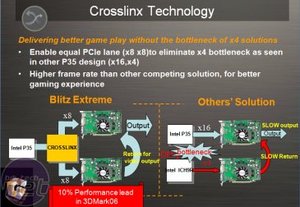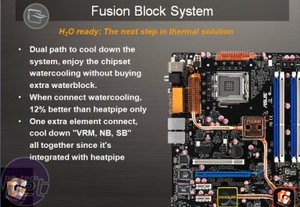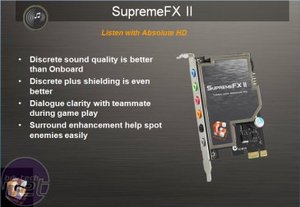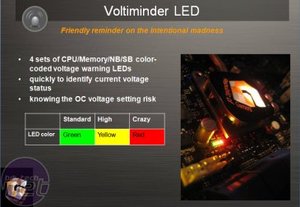Gaming Blitz (continued)
Blitz Extreme also includes a new hybrid northbridge cooler, which Asus has coined “Fusion”. This allows the enthusiast to either run the board passively, or with their watercooling loop connected directly into the heatpipe solution, negating the need for an additional chipset waterblock along with the need for heatsinks for the PWMs, southbridge and Crosslinx chip.This feature isn’t available on the Blitz Formula board, which is a little disappointing but, aside from DDR3 support, it’s the single differentiating factor between the two boards.
We moaned about the ADI on-board sound solutions in our reviews of Asus's first P35-based boards, but there were also problems with the on-board solution on the Asus Commando too. However, instead of using an on-board solution, the Commando used a SupremeFX daughter card, as is standard with the RoG line. Asus realised that there was the potential for shielding issues in certain situations and thus the SupremeFX II was born.
Asus has also listened to our comments regarding the positioning of the LCD poster screen that was on previous the Republic of Gamers board’s rear I/O panel. Instead, the LCD is now mounted on a cable that’s long enough for you to place somewhere more prominent, be it on your desk or even on the top of your case. I’m sure that some of the modders in our community using this board would definitely look to mount the screen in a more elaborate manner though.




Of course, that’s not all with an Republic of Gamers board, and there are many more features included – the most notable being on-board LED-backlit power, reset and clear CMOS switches. There are also 100 percent solid Japanese capacitors – a standard feature on today’s high-end motherboards, an EL rear I/O shield and there is also a comprehensive bundle, which is almost a given with the RoG series boards.

MSI MPG Velox 100R Chassis Review
October 14 2021 | 15:04









Want to comment? Please log in.